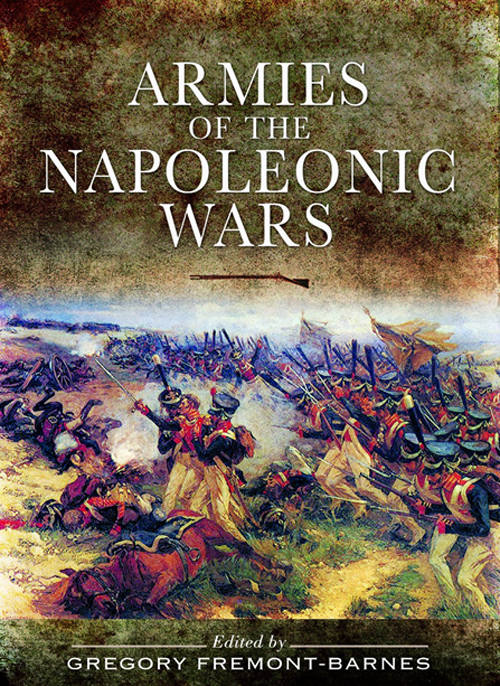Armies of the Napoleonic Wars
Review

Armies of the Napoleonic Wars, edited by Gregory Fremon-Barnes, Pen and Sword Books Ltd, 2011, hardback, 271 pp., £25.00 ISBN 9781848840676; Walcheren 1809. The Scandalous Destruction of a British Army, Martin R. Howard, Pen and Sword Military, 2012, hardback, 242 pp., £19.99 ISBN 9781848844681; Russian Eyewitness Accounts of the Campaign of 1812, Alexander Mikaberidze, Frontine Books, 2012, hardback, 261 pp., £25.00, ISBN 9781848326354
Armies of the Napoleonic Wars brings together a team of leading experts to provide a compact single-volume introduction to the principal armies of the Napoleonic Wars, namely the armies of Austria, Britain, the Confederation of the Rhine, the Duchy of Warsaw, France, the Kingdom of Italy, Portugal, Prussia, Russia and Spain. It thereby provides a lively comparative analysis of the ten most significant armies of the protracted war against Napoleonic France during the critical decade in the conflict between 1805 and 1815, highlighting their respective composition, organisation and fighting efficiency. In Walcheren 1809:The Scandalous Destruction of a British Army, Martin R. Howard, a hospital consultant with an interest in military history, explains the defeat of the largest British amphibious assault yet assembled in 1809 on the island of Walcheren in the Scheldt estuary. The defeat of the ill-fated British expedition is explained partly in terms of an ineffective high command with bickering between ‘the lethargic military commander', Lord Chatham and ‘the opinionated senior naval commander', Sir Richard Strachan. However, it argues that it failed primarily because some 4,000 troops succumbed to a mysterious disease tentatively and imprecisely identified ‘Walcheren fever' which left a further 11,000 still registered sick after the Scheldt was evacuated. The author is well-qualified to assess the impact of this tragic episode having also studied the medical aspects of Sir John Moore's Corunna campaign of 1808-09 and British army medical services more generally throughout the Napoleonic Wars. He cites Wellington's complaint that the constitution of his troops was ‘much shaken with Walcheren' three years later, in 1812, as evidence of the disaster's enduring impact on the morale and physique of the British army. Carefully researched drawing on vivid British, French and Dutch eye-witness accounts, Howard's book provides an informed, highly readable examination of a pivotal event largely ignored by military historians. Alexander Mikaberidze who contributed the chapter on the Russian army to the composite volume on armies of the Napoleonic wars reviewed above has brought together a fascinating collection of primary sources in Russian Eyewitness Accounts of the Campaign of 1812, the most calamitous military campaign fought by Napoleon prior to the Battle of Waterloo in which, like the British Walcheren expedition, factors other than combat had a devastating impact. This collection of eye-witness accounts includes extracts never before published in the English language with first-hand accounts of the initial retreat of the Russian army, the fall of Smolensk and the bloody battle of Borodino. It fills a gap in the accessible sources available to non-Russian speaking historians and students of this watershed in the protracted war against Revolutionary and Napoleonic France.

